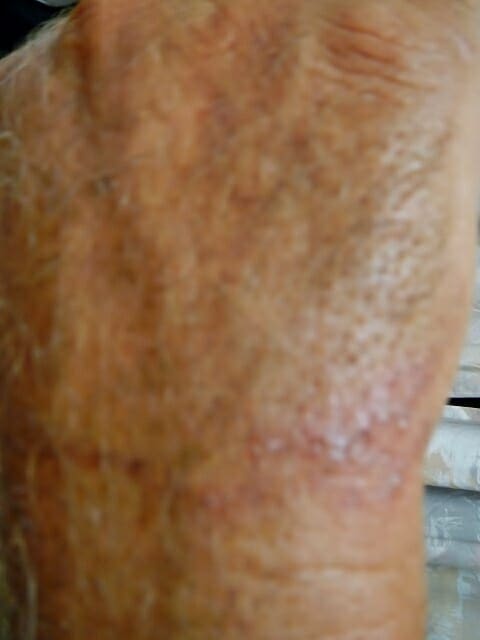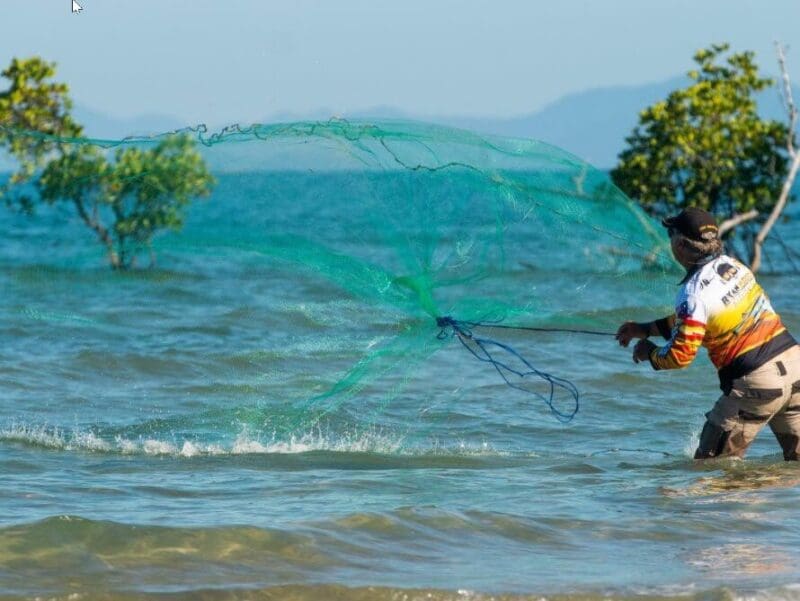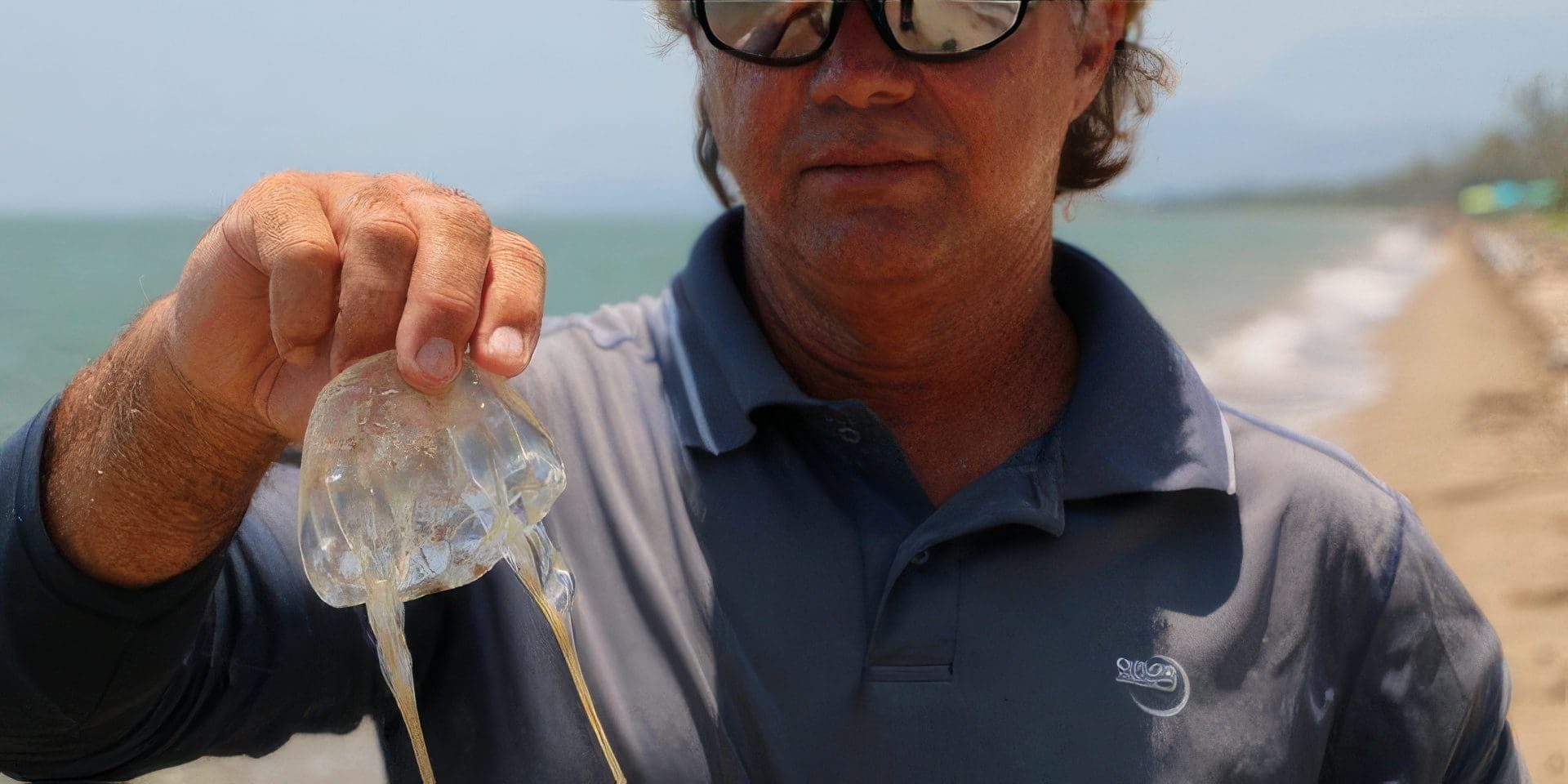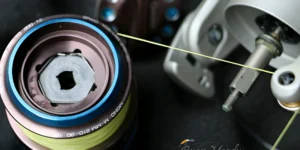With venom one of the deadliest in the world, it’s unfortunate when you get box jellyfish in your cast net.
Because I know only too well how unpleasant it is to be stung! It BURNS!
I usually getting hit a couple of times per season – mostly minor of course.
BOX JELLYFISH IN YOUR CAST NET
For those unfamiliar with a box jellyfish, these critters inhabit the shallow turbid waters of the north Queensland tropics.
They are particularly prevalent when the wind is blowing from the north (north-west to north-east).
The south-easterly generally pushes them off the coast and out around the islands.
Here in the southern hemisphere we encounter them in summer. Mostly between November and early April.
The photo below shows a box jellyfish sting/burn on the back of my hand.

STINGS ARE PREVENTABLE
Most of my stings are preventable and occur while I am looking the other way retrieving the anchor.
The stinging tentacles (a maze of microscopic darts) often cling to the anchor rope. Due to their glassy colouring, they’re not really that noticeable.
Until they flick up and sting the back of your hand.
Then they are most definitely noticeable as it burns like fire on the softer skin.
I have also been done by boxies around the ankles while cast netting for bait in the shallows.

PAIN LEVEL?
Now for all you sadists out there following my recent spate of injuries, a box jelly tentacle to the back of the hand or ankle is comparable in pain level to a sting ray barb to the knee bone. But the pain is very different sensations.
The box is very definitely a burn while the barb is a throbbing ache. I would hate to think of what it would be like to get a major injury from either of these beasts.
That said most regular encounters I have with box jellyfish are in my cast net.
Contrary to popular belief, boxies don’t just get pushed around by wind and tide. They are active swimmers and very much in control of their destiny.
BOX JELLYFISH IN CAST NETS
Box jellyfish tend to come inshore and wander the beaches in the lead up to and after the monsoon, congregating in areas where juvenile prawns and bait fish aggregate.
The exact same areas I head to catch bait – hence I get them in the cast net, often in big numbers.
The tentacles are sticky as hell and cling to all areas of soft skin and the cast net.
The tentacles will stick to pretty much anything their darts can fire into.
Over the years I have evolved a few simple tricks to get them out of my net quickly, easily and pain free as demonstrated in the video below.
THEY CAN’T STING YOUR FINGER PADS
First thing is not to exacerbate the problem by pulling or shaking them out of the net.
The tentacles are very soft and can break off and remain in your net making a tedious mess to tidy up.
I tend to just drop the animal gently out of the pocket onto the beach and using my fingers, lift the net above and away from the animal slowly.
This way most of the tentacles that break off will go back to the animal leaving you with less to pick out.
There are then two ways to extract any remaining tentacles from the net.
- One is to roll them up with a small stick if you’re too wary to touch them.
- Or you can touch them with the thick skin on the pads of your fingers.
I can tell you from much experience, I have never even felt a tingle from touching them with my fingertips and palms.
Interestingly, they do not stick to your finger pads – another good indicator that they cannot sting you.
CAUTION – THE STINGING CELLS ARE TRANSFERABLE
Now although they can be safely removed from the net with fingers, I must caution you.
If you use this method you MUST WASH YOUR HANDS IMMEDIATELY with saltwater (not freshwater) or vinegar to ensure you do not transfer them to more susceptible parts of the body e.g. if you rub your eye or go to the bush toilet.
I cannot stress enough how unpleasant that will be!
Now I better clarify about washing your hands with sand and saltwater.
This does a great job of firing all the stinging cells on your hands so they can’t sneak up on you later.
But this is not recommended for a major sting on the soft skin.
Here is the approved treatment suggestions from Qld Ambulance.
RECOGNIZED TREATMENT FOR BOX JELLYFISH STING
I believe (and happy to stand corrected) recognized first aid for box jellyfish is to douse the area in vinegar as this neutralizes any un-fired cells instead of firing them into your soft skin.
By all means pick them off with your fingertips but be careful of cross transfer of un-fired cells.
Do not rub a major sting with sand! This will rub them IN, fire more off and make it worse.
So… surely I have reached my dangerous critter encounters (sting-rays, crocs and stingers) quota for this month so I can concentrate on preparing some fishing tips for you.
I hope you enjoyed the video on how to remove box jellyfish in your castnet and these simple tips make your life easier.
A rising tide lifts all boats so please feel free to share the video or leave a comment below with your thoughts and any jellyfish tips and/or stories of your own so we can all benefit.
Catch you on the water.
Cheers, Ryan.
If your loving our tips and would like to see some we only share via email (and go in the draw to win a barra charter with Ryan Moody) enter your name and email and join our free fishing community.
Get into the great outdoor and keep fishing smarter – Tight lines. Cheers Ryan











